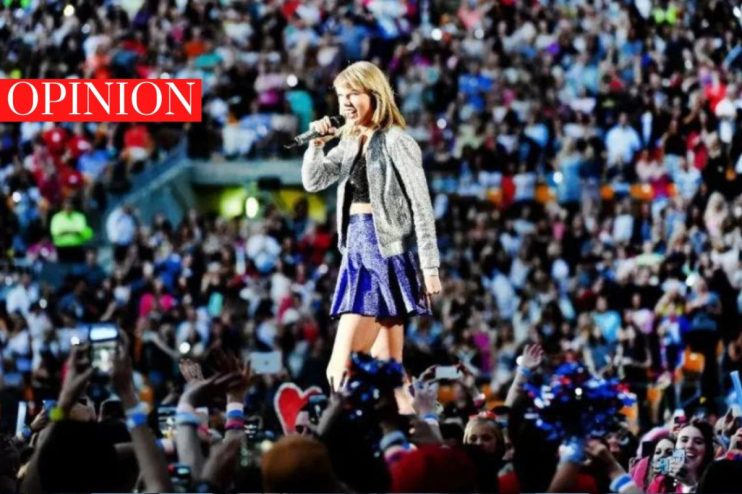How bots came to rule the world, from Ticketmaster to global elections

Bots are not only a problem on social media: they shape retailers like Ticketmaster and can influence politics, including global elections. Yet the danger they pose is underestimated, writes Elena Siniscalco
Our online spaces are made up of almost infinite interconnected webs. Last week, in the UK, the Electoral Commission was hacked, throwing into sharp relief the security we have for our most important institutions. But outside of those that keep our parliament and our courts functioning, we’ve accepted as part of everyday life the work of thousands of tiny, powerful fraudulent entities on the internet: bots.
We tend to understand bots as fake accounts on social media compulsively sharing information according to the interests of their creators. In reality, a bot is any script or programme that automates a precise task.
It’s not a bad thing per se, but it has gained a negative connotation in our collective imagination because they are so often used for malevolent or criminal purposes.
Bots are everywhere: they have mushroomed as a ghost squad of disinformation spreaders on social media, but they’re also deployed in retail. Last year, chaos unfolded in the world of Taylor Swift fans when bots drove so much traffic that the Ticketmaster website crashed. Bots are often used to purchase high numbers of concert tickets so the buyer can resell them at crazy high prices.
The same happens with limited editions of sneakers, with products on sale on e-commerce platforms, and even with loyalty programs. Get a free coffee when you sign up with a new account? Bots will create hundreds of new accounts in a matter of seconds.
Dan Woods, a former CIA and FBI agent who is now global head of bot and risk management at cybersecurity company F5, says many companies he works with have 95 per cent of their traffic automated, meaning bots are driving it. Their execs and marketing teams are shocked when they discover it.
For some companies, there is little financial incentive in getting rid of bots. The number of daily active users or customers plays a role in their valuation. “If they suddenly had a tenth of the accounts they thought they had, their company would lose significant value”, Woods says. So they try to look like they’re doing something to avoid bad press, but in the end all it matters is that someone buys their product, whether that’s a customer or a bot being masterminded by someone looking to make a quick buck won’t immediately hit their bottom lines.
Of course, as we saw with the Taylor Swift tickets, it can have significant reputational implicates if fans are constantly losing out or being forced to pay over the market rate. Indeed, to minimise ticket inflation for the superstar’s European tour, Ticketmaster has said any tickets resold via third platforms like Viagogo could be cancelled.
On social media, the situation is slightly different, but no less insidious. Initially, Elon Musk tried to back out of buying Twitter because of the amount of fake accounts on it. Then, he focused all his efforts on eliminating them.
Everyone loves to hate Elon Musk, but Woods says that at least on bots, he’s done a good job. Even still he’s only managed to delete all the “cheap” bots, not the more complex ones. Twitter bots fall into two categories: the obviously fake accounts, which are really cheap to buy, and what Woods calls “sticky followers”: accounts that look dangerously real.
Woods made an experiment: he wanted to see how easy it was to buy followers. “I bought over 100,000 followers for my fake account and it cost me less than $1000”, he says. He also wrote a code – jargon for creating a bot – to automatically generate Twitter accounts. It wasn’t that hard, he says.
Since Musk strengthened verification and introduced other checks, Woods’ fake follower count plummeted to 8000 followers.
The dangers are not only commercial, but also political. China has repeatedly been accused of using bots to influence public opinion. Last year, it inundated social media with spam to conceal the coverage of protests about the stringent lockdowns. And of course, there was the Cambridge Analytica scandal in 2016 where the data firm managed to collect data on 50 million Facebook users. According to Cornell University, bots help to infiltrate a given social media platform.
Woods says state actors are willing to spend millions of dollars on tools to influence public opinion and shape politics. And they have a key advantage: it’s pretty easy to disguise where the attack comes from. When Woods was at the CIA, they would carry out false flag operations to study how state entities make it look like an attack came from a different place. “If I wanted the attack to look like it came from Russia, then I would do everything Russians do in an attack”, he says.
We have tacitly accepted a world where bots rule the Internet, reaching into almost every part of our online experience. If getting them down to 0 per cent is as hard as Woods describes it, then companies – and governments – should at least aim at something in between that and the worryingly high 95 per cent. After all, it’s only the safety of social media users, customers and democracies that’s at stake.